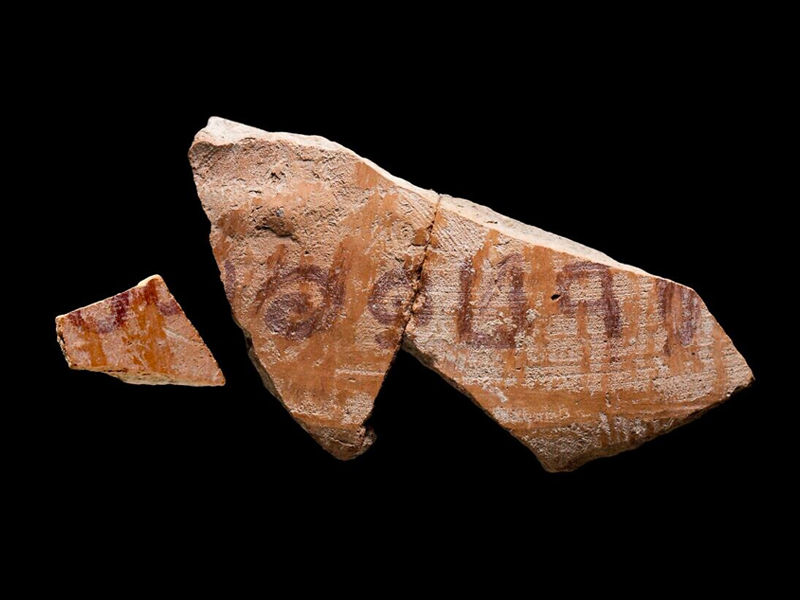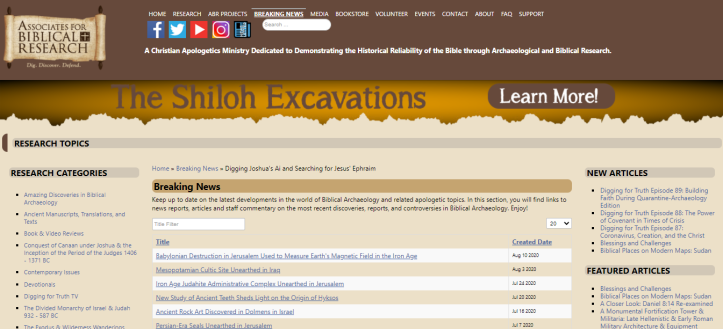
July was a banner month in biblical archaeology with three significant finds announced, each of which has a good chance of making my year-end top ten list (you can find my list of the top ten discoveries in biblical archaeology for the past five years here: 2020, 2019, 2018, 2017, and 2016). Here were the top three reports in biblical archaeology for July 2021.
3. Magnificent Banquet Hall Discovered Near Western Wall

The Israel Antiquities Authority recently announced the discovery of a lavish structure underneath the Old City of Jerusalem near the Western Wall. Part of the building was noted by British archaeologist, Charles Warren, in the 19th century, but he only penetrated one of the chambers and found it filled with earth. The recently-excavated structure contains two rooms decorated with Corinthian capitals, which protrude from the walls. These rooms are connected by another which once featured a fountain with running water. Based on pottery and Carbon-14 samples taken from the floor, it was constructed ca. 20 AD, and was likely used as a triclinium, or dining room for the upper class on their way to worship. At one time, the rooms would have had wooden sofas running all around the walls, where visitors reclined and ate; the furniture has not survived, but the imprint on the walls where they once were can still be seen. Sometime prior to the destruction of Jerusalem, the fountain was taken out and a mikveh (ritual bath) was added. This structure will soon be open to the public as a new stop on the Western Wall Tunnels Tour, which allows people to visit the ancient city below the modern one.
2. Section of Ancient Wall Discovered in Jerusalem

A portion of the Iron Age city wall of Jerusalem was recently discovered on the eastern slope of the City of David. It lies between two other sections of the ancient city fortifications: one to the north discovered by Kathleen Kenyon and one to the south unearthed by Yigal Shiloh. It was likely constructed sometime in the 8th century BC, possibly during King Hezekiah’s reign, although archaeologists are awaiting radiocarbon dating to confirm this. The newly excavated sections are 15 ft/5m wide and stand up to 10 ft/3 m high; one part of the wall extends 130ft/40m and another is 10ft/3m long. Other artifacts, including LMLK jar handles, a bulla, and a small Babylonian stamp seal were also discovered nearby. While other sections of Jerusalem’s wall were destroyed by the Babylonians in 586 or 587 BC (depending on one’s chronology), this portion of the city wall may have been spared as it lies on a such a steep slope and would have been difficult to demolish.
1. Biblical Name Jerubbaal Found on Pottery Sherd from the Time of the Judges

An ostracon (a pottery sherd with writing) bearing the name Jerubbaal, has been unearthed at Khirbat er-Ra‘I, located near the ancient city of Lachish. Jerubbaal (“Let Baal contend against him”) was the nickname that Gideon was given after he destroyed the altar of Baal (Judges 6:32). The ostracon dates to the 12th-11th century BC based on typology and radiocarbon dating from organic samples taken from the same archaeological layer in which it was found. The name Jerubbaal is only ever used for Gideon in the Bible, and this is the first discovery of it in an archaeological context. Due to the uniqueness and rarity of the name, some scholars believe this to be a reference to Gideon. Others have urged caution, noting that is impossible to know for certain if this inscription refers to the biblical judge without more information (ie. father’s name, title, or epithet). Regardless, this discovery is significant in that it affirms the name Jerubbaal was used during the time the Bible describes.
Stay Up-To-Date
Get the latest BREAKING NEWS in biblical archaeology each week here: https://biblearchaeology.org/current-events-list

